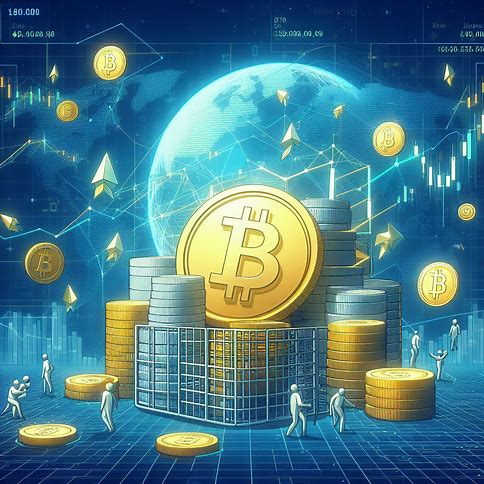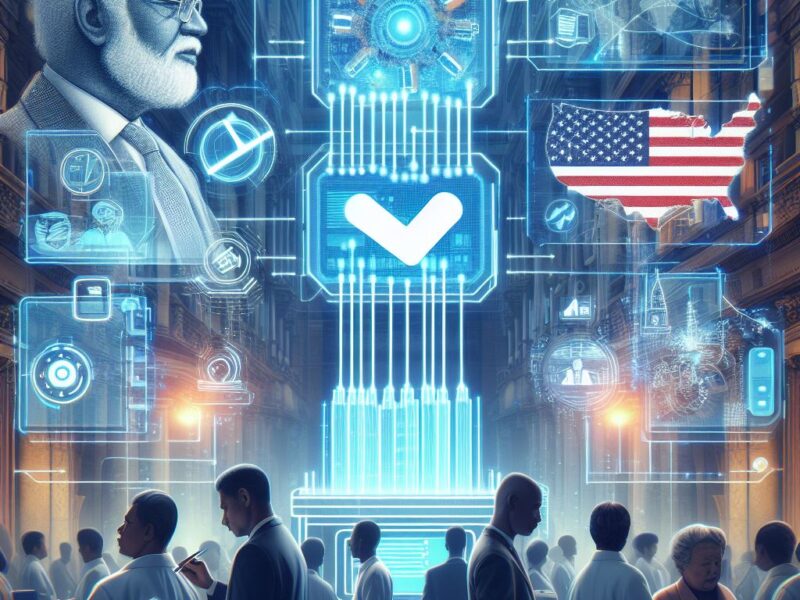Metaverse is a shared virtual space where users can interact, create, and trade digital assets. It has captured the imagination of tech enthusiasts, gamers, and investors alike.
In this post, we will explore the role of cryptocurrency and blockchain in virtual worlds. We will see how they are being used to create new opportunities and solve key challenges in the metaverse and Web3 landscape.
Jump To
ToggleThe Role of NFTs in Virtual Asset Ownership
One of the key building blocks of the metaverse economy is the concept of non-fungible tokens, or NFTs. Unlike traditional cryptocurrencies like Bitcoin which are interchangeable, each NFT is a unique digital asset with its own distinct value and attributes. This makes NFTs ideal for representing one-of-a-kind virtual items like artwork, collectibles, or even virtual real estate.
In metaverse platforms like Decentraland and The Sandbox, NFTs are being used to enable true ownership and scarcity of virtual assets. Just like in the physical world, users can buy, sell, and trade NFT-based items, with the blockchain providing a transparent and immutable record of ownership. This opens up new possibilities for creators to monetize their work and for users to build and showcase their virtual collections.
However, the use of NFTs in the metaverse goes beyond just digital collectibles. They can also be used to represent more complex assets like virtual land parcels, each with their own unique location, size, and features. This has given rise to a booming virtual real estate market, with some parcels selling for millions of dollars worth of cryptocurrency.
As the metaverse continues to grow, NFTs are poised to play an increasingly important role in its economy. They provide a standardized and interoperable way to represent virtual assets across different platforms, enabling a more seamless and liquid market for users and creators alike.
But NFTs are just one piece of the puzzle when it comes to building a thriving metaverse economy. Another key ingredient is the use of cryptocurrencies for payments and value transfer.
Cryptocurrencies as the Lifeblood of the Metaverse Economy
Just as NFTs are enabling new forms of virtual asset ownership, cryptocurrencies are emerging as the primary means of exchange and value storage within the metaverse. From buying and selling virtual goods to rewarding creators and incentivizing user participation, crypto is becoming the lifeblood of these virtual economies.
One of the key advantages of using cryptocurrencies in the metaverse is their ability to enable fast, low-cost, and borderless transactions. Unlike traditional payment methods which can be slow, expensive, and subject to geographical restrictions, crypto allows users to instantly and securely transact with each other regardless of their location. This is particularly important in a global and decentralized environment like the metaverse.
Moreover, many metaverse platforms are developing their own native cryptocurrencies or tokens, which serve as the primary unit of account and medium of exchange within their virtual worlds. These tokens can be used to purchase virtual land, goods, and services, as well as to reward users for their contributions and engagement.
For example, Decentraland uses MANA, a fungible ERC-20 token, as its primary currency. Users can buy MANA on cryptocurrency exchanges and then use it within Decentraland to purchase parcels of virtual land, known as LAND, which are themselves unique ERC-721 NFTs. Similarly, The Sandbox uses SAND, another ERC-20 token, as its main utility token for transactions and interactions within its gaming metaverse.
Cryptocurrencies are also being used to incentivize and govern user behavior in the metaverse. Many platforms are experimenting with token-based reward systems, where users can earn tokens for contributing content, participating in events, or even just spending time in the virtual world. These tokens can then be used to unlock exclusive experiences, vote on platform decisions, or be traded on secondary markets.

The Blockchain Infrastructure Powering the Metaverse
Blockchains provide the decentralized, secure, and transparent infrastructure needed to power virtual worlds at scale. A blockchain is a distributed ledger technology that allows multiple parties to reach a consensus on the state of a shared database without the need for a central authority. In the context of the metaverse, blockchains are being used to track the ownership and transfer of virtual assets, execute smart contracts, and enable decentralized governance systems.
By building metaverse platforms on open blockchain protocols like Ethereum, developers can create standardized and interoperable systems for representing virtual assets and identities. This allows assets to be easily traded and used across different applications, increasing their liquidity and utility.
Also, blockchains enable the creation of decentralized autonomous organizations (DAOs). DAOs can be used to collectively manage virtual spaces, make decisions about platform upgrades and monetization, and distribute rewards to contributors.
This decentralized governance model is a key part of the Web3 ethos, which seeks to give users more control and ownership over the online services they use. Rather than being at the mercy of centralized platforms that can change the rules or revoke access at any time, users in a blockchain-based metaverse have a direct say in how the virtual world operates.
The Future of the Metaverse: Challenges and Opportunities Ahead
Cryptocurrencies and blockchain technology are playing a pivotal role in shaping the emerging metaverse economy. From enabling true ownership of virtual assets to powering new forms of decentralized finance, these tools are laying the foundation for a more open, interoperable, and user-centric virtual future.
However, realizing the full potential of the metaverse will require overcoming some significant challenges and uncertainties. In addition to the technical hurdles around scalability and interoperability, there are also major questions around governance, privacy, and inclusivity that need to be addressed.
For example, while the decentralized nature of blockchain holds the promise of more democratic and participatory virtual worlds, it also raises concerns about how to effectively moderate content and police bad behavior in a largely anonymous and borderless environment. Striking the right balance between openness and safety will be a key challenge for metaverse builders.
There are also questions about the accessibility and distribution of the metaverse economy. Will the use of cryptocurrencies and complex DeFi mechanisms create new barriers to entry, or will they ultimately enable a more inclusive and equitable virtual landscape? Ensuring that the benefits of the metaverse are widely shared and not just captured by a tech-savvy elite will be critical.
Despite these challenges, the potential of the metaverse is great. It represents a new system for how we interact, create, and transact online. A system that is more immersive, more empowering, and more deeply integrated with our digital lives.
Key Takeaways
- NFTs are enabling true ownership and scarcity of virtual assets in the metaverse, from digital collectibles to virtual real estate.
- Cryptocurrencies are becoming the primary means of exchange and value storage within metaverse economies, enabling fast, low-cost, and borderless transactions.
- Blockchain technology provides the decentralized, secure, and transparent infrastructure needed to power virtual worlds at scale and ensure interoperability between platforms.
- Decentralized finance (DeFi) is creating new opportunities for financial innovation in the metaverse, from collateralized lending of virtual assets to play-to-earn gaming economies.
- Realizing the full potential of a crypto-powered metaverse will require overcoming challenges around scalability, governance, privacy, and inclusivity.
FAQs
1. What are some examples of cryptocurrencies used in the metaverse?
Many metaverse platforms have their own native tokens, such as MANA in Decentraland and SAND in The Sandbox, which serve as the primary currency for transactions and interactions within those virtual worlds. Other popular cryptocurrencies like Ethereum and Bitcoin are also widely used for metaverse-related purchases and investments.
2. Can I make money in the metaverse through crypto and NFTs?
Yes, there are various ways to potentially earn income in the metaverse using crypto and NFTs. These include investing in and trading metaverse-related tokens, buying and developing virtual land, creating and selling NFT-based digital goods, and participating in play-to-earn games and DeFi yield farming opportunities. However, as with any investment, there are also significant risks involved.
3. What role does Ethereum play in the metaverse?
Ethereum is currently the most widely used blockchain platform for metaverse development, thanks to its robust support for smart contracts and NFTs (through token standards like ERC-721 and ERC-1155). Many leading metaverse projects, including Decentraland and The Sandbox, are built on the Ethereum blockchain. However, high gas fees and scalability issues on Ethereum have also led some projects to explore alternative blockchain platforms.
4. How do I access the crypto metaverse?
Accessing crypto-powered metaverse platforms typically requires a compatible crypto wallet, such as MetaMask, which allows you to store and transact with the necessary tokens. You’ll also need a computer or VR headset that meets the technical requirements of the specific metaverse platform you want to use. Some popular metaverse platforms include Decentraland, The Sandbox, Somnium Space, and Cryptovoxels.
5. What are some of the key challenges facing the crypto metaverse?
In addition to technical challenges around blockchain scalability and interoperability, the crypto metaverse also faces questions around governance, security, and accessibility. Ensuring that virtual worlds are safe, inclusive, and democratically managed spaces will require ongoing collaboration and innovation from the community. There are also regulatory uncertainties around the legal status of virtual assets and economies that will need to be navigated.
6. What impact will the metaverse have on the wider adoption of crypto and blockchain?
The growth of the metaverse could be a major driver of mainstream adoption for cryptocurrencies and blockchain technology. As more people interact with and derive value from crypto-powered virtual worlds, it could help to demystify and normalize the use of these technologies for a wider audience. The metaverse also provides a compelling use case for blockchain beyond financial speculation, showcasing its potential for enabling new forms of digital ownership, creativity, and community-building.










